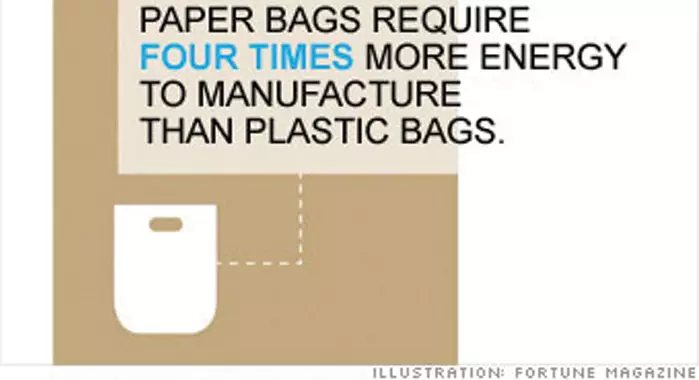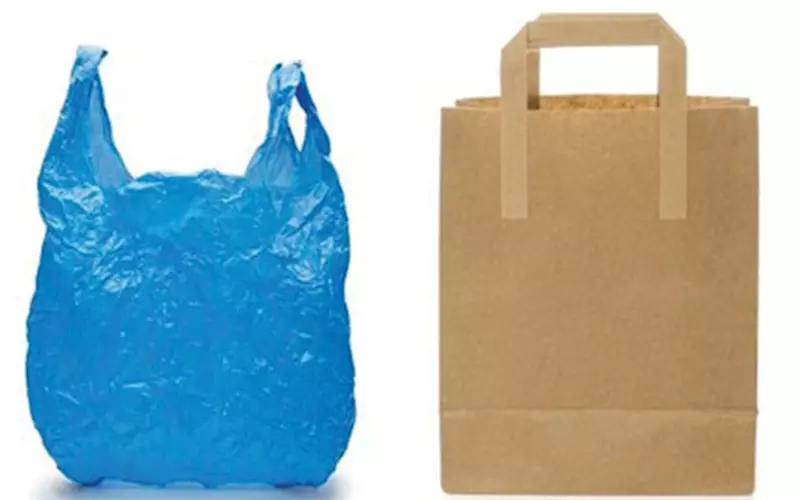The battle of the bag: paper or plastic?
To underline the implications of using paper or plastics for packaging, Bhavika Shah lists its pros and cons, for responsible use and disposal of the materials for packaging
05 Mar 2018 | By PrintWeek India
Paper
We have all seen those brown, craft paper bags when you buy something at a store or supermarket. Unless they are made using recycled paper, these ‘organic’ brown bags are not as green as they seem. Paper definitely has a great set of pros, but a long list of cons as well. Here is a closer look at the seemingly greener option, paper.
Pros:
Degradable: Probably the best quality about paper is that it is easily degradable. If disposed properly, paper can degrade with minimum threat to the environment. This works best with minimally treated paper and soy-based inks.
Easily recyclable: Paper is easily recyclable compared to plastic and has a higher recycling rate. Scrap paper can be used to create moulded pulp packaging. Paper can also be re-purposed to create nutrient-rich compost.
Renewable resource: Fortunately or unfortunately, paper is made from a renewable energy resource, namely trees. In an ideal world, we would be planting trees at the same rate we are cutting them down. This is not an option for non-renewable sources of energy such as petroleum and fossil fuels.
Cons
Not easily reusable: Paper bags and packaging are quite delicate compared to plastic. It is quite unfortunate to be stuck out in the rain with a paper bag. Paper is definitely not as durable as plastic either, it can tear easily and crinkle as it gets older.
More pollution to create paper: Producing paper emits 70% more air pollution than plastic. It also produces 80% more greenhouse gases and 50 times more water pollutants than plastic. It also takes up about four times as much energy to produce as opposed to plastic.
Recycling can be inefficient: Recycling paper can be surprisingly counter-productive as it consumes more fuel than it does to create a new paper bag. It takes about 91% more energy to recycle paper than it would the same amount of plastic.
Heavier and higher in volume: Two thousand plastic bags weigh 30 pounds, whereas two thousand paper bags weigh 280 pounds. Paper, by sheer volume, generates about 80% more solid waste. Being heavier, it’s not as easily distributable either, increasing its carbon footprint.
Degrading paper: Yes, paper is degradable and takes a fraction of the time it does for plastic. However, degrading paper produces methane which is very harmful to the environment and a top cause of pollution.

Plastic
Plastic is a common evil with a very bad reputation. Most of us will be ever ready to list out its many evils. However, it has a surprising set of pros as well.
Pros:
Reusable and durable: Plastic’s biggest pro is that it is a sturdy material that is reusable and durable. It doesn’t get damaged if it gets wet and can virtually live for years without getting spoiled.
Less weight and volume: Plastic has lesser weight and volume and is easily transportable because of its lightness, decreasing its carbon footprint.
Less energy to recycle and produce: As compared to paper, plastic takes up far lesser energy to produce and recycle. Producing paper is incredibly resource-dependent. Plastic can also be remolded to create other products, making recycling more viable.
Plastic sequesters its carbon forever: Paper produces methane upon degrading, which is terrible for the planet. Plastic on the other hand, emits no such dangerous gases and sequesters its carbon forever.
Variety of uses: Plastic is a sturdy material with a variety of uses. From packaging to cutlery to septic tanks, plastic does not run out of uses.
Cons:
Takes over 1000 years to fully decompose: No exaggeration, it takes this long for plastic to fully decompose. And while it’s decomposing, it is littering the planet and wreaking havoc on wildlife and marine animals
Very little plastic is ever recycled: Although it takes less fuel to recycle plastic, only 1-3% of plastic is ever recycled.
Made of non-renewable resources: Most of the plastics are made of polyethylene, which is made from petroleum, a non-renewable resource. This is the largest danger of producing plastic.












 See All
See All